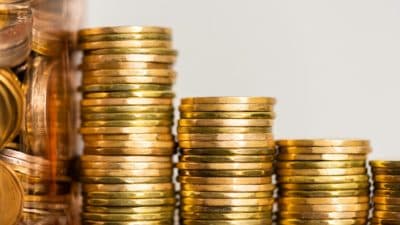The Canadian government mandated lockdown procedures and shut down all non-essential businesses to curb the spread of the virus. Unfortunately, that resulted in millions of people losing their jobs.
The Canada Revenue Agency (CRA) was quick to jump into action amid the COVID-19 pandemic and ensuing lockdowns. CRA introduced the Canada Emergency Response Benefit (CERB) a few weeks after the pandemic struck. The government introduced this program to help Canadians who lost income due to the pandemic take care of their expenses.
The monumental $2,000 per month stimulus payments helped millions of Canadians. It was paid out for four-week eligibility periods, translating to $500 per week. The program spanned a total of 28 weeks after two extensions.
While it has ended and been replaced by CERB alternatives, there is a chance you might have to pay back some or all of the CERB money.
Why you might have to repay CERB
To be clear, most recipients of CERB will not have to pay it back. However, you should know that there are circumstances that could make it necessary to pay back some or all of your CERB money. The average Canadian will have to declare their CERB money as part of their 2020 tax return when you file it in 2021. CERB payments will count as regular income.
If your 2020 income is beyond the minimum threshold, you will have to repay some of the CERB money based on which tax bracket you fall in. Besides paying your taxes on CERB, there is another reason you might have to pay back the CERB.
The CRA prioritized a quick distribution of CERB funds to Canadians. Due to its lenient approval process, the CRA disbursed the CERB money to many Canadians who applied for the benefit without qualifying for it. If you have collected CERB money without qualifying for it, the CRA recommends that you pay it back. Failing to do so could result in penalties that fall under fraud. However, repaying it because you know you received the funds erroneously could relieve you from any criminal action.
Millions of people who received the funds without qualifying for it have already paid back the ill-received CERB funds.
Invest your savings
Let’s suppose that you qualified for CERB for all the eligibility periods. You might have received a total of $14,000 through the duration of the benefit. In this case, if you have saved any of the “free” CERB money and have it in the form of cash, I would recommend using it to generate more income to offset your tax bill.
Investing your savings in a stock like BCE (TSX:BCE)(NYSE:BCE) and storing it in your Tax-Free Savings Account (TFSA) can help you turn your savings into a more substantial amount. You can use your profits from investing in the stock to offset your tax bill and create a tax-free and passive income source that you can benefit from for years.
BCE can be an excellent investment for your TFSA for several reasons. The Canadian telecom giant continued generating revenue through the pandemic because it provides an essential service. No matter how bad the economy gets, people need to continue using the internet and communicate with each other.
As the economy gets better, lockdowns end, and travel resume, BCE could see its revenues increase. The rollout of 5G networks can boost its rates for phone services as well. BCE’s valuation is $54.81 per share at writing. It is trading for a 15% discount from its February 2020 high, and it pays investors at a juicy 6.08% dividend yield that is inflated due to its lower share prices.
Foolish takeaway
Investing your CERB money in income-generating assets could provide you with returns that can offset your tax bill. Additionally, remaining invested in the stock can provide you with tax-free returns through your TFSA. You can withdraw the dividend income for tax-free passive income or reinvest the amount to unlock the power of compounding.
Investing in BCE could help you leverage its capital gains and dividend income. If you buy and hold enough dividend-paying stocks in your TFSA, you can gradually create a passive income source that could supplement your active income for years to come.








